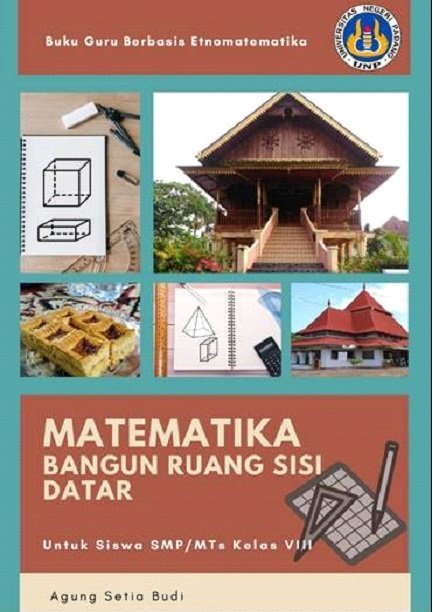Development of Flat Solid Figure Learning Design based Rejang Lebong Ethnomathematics
DOI:
https://doi.org/10.25217/numerical.v7i1.2790Keywords:
Ethnomathematics, Learning Design, Rejang Lebong, Students' Mathematical Problem-SolvingAbstract
This study aims to produce a learning design for flat-sided geometry based on Rejang Lebong ethnomathematics to improve students' mathematical problem-solving skills that are valid, practical, and effective. It is motivated by the low ability to solve students’ mathematical problems. Mathematics learning carried out in schools should involve students actively. The research procedure is guided by the Plomp development design. The development model studied by Plomp is the initial investigation, development, prototyping, and research phases. In the initial investigation phase, the implementation of needs, curriculum, concept, and student analyses was implemented. In the prototype development phase, formative evaluation consists of self-evaluation, one-on-one evaluation, one-on-one evaluation, small group evaluation, and testing. Meanwhile, at the time of its application, it was tested on students of class VIII SMP to see the learning outcomes of the learning problem-solving abilities. Based on the development that has been carried out, it is obtained that the learning design of flat-sided geometry based on the Rejang Lebong ethnomathematics in the form of HLT, teacher's books, and books for class VIII SMP students are valid, practical, and effective.
References
N. Fitriani and P. Nurfauziah, “Gender and mathematical abstraction on geometry,” Journal of Physics: Conference Series, vol. 1315, no. 1, 2019, doi: 10.1088/1742-6596/1315/1/012052.
Abdussakir, “Geometry, Van Hielle Theory and Special Place,” Jurnal Madrasah, vol. II, no. 1, p. 1, 2009.
K. D. Sari, R. Rismayanti, and I. Puspitasari, “Analisis Kemampuan Pemahaman Dan Pemecaham Masalah Matematik Siswa MTs Pada Materi Bangun Ruang Sisi Datar,” JPMI (Jurnal Pembelajaran Matematika Inovatif), vol. 1, no. 5, p. 965, 2018, doi: 10.22460/jpmi.v1i5.p965-974.
Hestu. T. Armiati & Laia, “Dampak Perangkat Pembelajaran Matematika Berbasis Kompetensi Profesi Terhadap Kemampuan Pemecahan Masalah Siswa Bidang Keahlian Teknologi Informasi dan Komunikasi,” JEP (Jurnal Eksakta Pendidikan), vol. 4, no. 1, pp. 57–65, 2020.
M. D. Nasution, W. Oktaviani, U. Muhammadiyah, S. Utara, U. Muhammadiyah, and S. Utara, “Pengembangan Perangkat Pembelajaran Matematika Berbasis Masalah Untuk Meningkatkan Kemampuan Pemecahan Masalah Siswa SMP PAB 9 Klambir V T.P 2019/2020,” Journal Mathematics Education Sigma [JMES], vol. 1, no. 2, 2020, doi: 10.30596/jmes.v1i1.4390.
R. Tania and Jumadi, “The Application of Physics Learning Media Based on Android with Learning Problem Based Learning (PBL) to Improve Critical Thinking Skills,” Proceedings of the 7th International Conference on Research, Implementation, and Education of Mathematics and Sciences (ICRIEMS 2020), vol. 528, no. Icriems 2020, pp. 583–590, 2021, doi: 10.2991/assehr.k.210305.085.
S. A. Seibert, “Problem-based learning: A strategy to foster generation Z’s critical thinking and perseverance,” Teaching and Learning in Nursing, vol. 16, no. 1, pp. 85–88, 2021, doi: 10.1016/j.teln.2020.09.002.
E. Iswara and R. Sundayana, “Penerapan Model Pembelajaran Problem Posing dan Direct Instruction dalam Meningkatkan Kemampuan Pemecahan Masalah Matematis Siswa,” Plusminus: Jurnal Pendidikan Matematika, vol. 1, no. 2, pp. 223–234, 2021, doi: 10.31980/plusminus.v1i2.1258.
L. Lufri, S. Elmanazifa, and A. Anhar, “the Effect of Problem-Based Learning Model in Information Technology Intervention on Communication Skills,” Ta’dib, vol. 24, no. 1, p. 46, 2021, doi: 10.31958/jt.v24i1.2456.
Suparman, D. Juandi, and M. Tamur, “Review of problem-based learning trends in 2010-2020: A meta-analysis study of the effect of problem-based learning in enhancing mathematical problem-solving skills of Indonesian students,” Journal of Physics: Conference Series, vol. 1722, no. 1, 2021, doi: 10.1088/1742-6596/1722/1/012103.
A. Armiati, Y. Yerizon, and R. O. Hersika, “Trigonometry learning device based guided discovery for high school students of class X,” International Journal of Scientific and Technology Research, vol. 8, no. 8, pp. 31–37, 2019.
M. A. Simon, “Reconstructing Mathematics Pedagogy from a Conswtructive Perspective.,” Journal of Research in Mathematics Education, 1995.
A. Hartoyo, “Eksplorasi Etnomatematika pada Budaya Masyarakat Dayak Perbatasan Indonesia-Malaysia Kabupaten Sanggau Kalbar,” Jurnal Penelitian Pendidikan, vol. 13, no. 1, pp. 14–23, 2012.
Hasratuddin, “Pembelajaran Matematika Sekarang dan yang akan Datang Berbasis Karakter,” Didaktik Matematika, vol. 1, no. 2, pp. 30–42, 2014, doi: 10.24815/jdm.v1i2.2059.
L. Putri, “Eksplorasi Etnomatematika Kesenian Rebana Sebagai Sumber Belajar Matematika Pada Jenjang Mi,” Jurnal Ilmiah Pendidikan Dasar UNISSULA, vol. 4, no. 1, p. 136837, 2017, doi: 10.30659/pendas.4.1.
Z. M. Nuh and Dardiri, “Etnomatematika Dalam Sistem Pembilangan Pada Masyarakat Melayu Riau,” Kutubkhanah, vol. 19, no. 2, pp. 220–238, 2016.
E. B. Prihastari, “Pemanfaatan Etnomatematika Melalui Permainan Engklek Sebagai Sumber Belajar,” Mendidik, vol. 1, no. 2, pp. 155–162, 2015.
M. Mutia, A. Septiana, and..., “Eksplorasi Etnomatematika Dalam Tari Kejei Dan Rumah Adat (Umeak Potong Jang) Kabupaten Rejang Lebong,” Procedings-M18 Universitas Muhammadiyah Surakarta, 2019.
T. Plomp and Nienke Nieveen, Educational Design Research, Part A: An introduction. Enschede, Netherlands: SLO, 2013.
Marsigit, R. Condromukti, D. S. Setiana, and S. Hardiarti, “Pengembangan Pembelajaran Matematika Berbasis Etnomatematika,” Journal of Chemical Information and Modeling, pp. 20–38, 2019.

Downloads
Published
How to Cite
Issue
Section
License
Copyright (c) 2023 Agung Setia Budi, Armiati, Edwin Musdi, Ali Asmar

This work is licensed under a Creative Commons Attribution-ShareAlike 4.0 International License.






